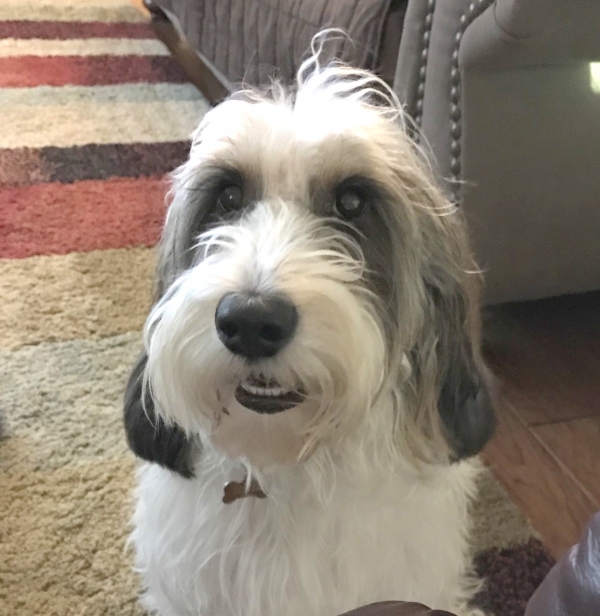

Henry, born 2014, is a Petit Basset Griffon Vendeen which is often shortened to PBGV. When we brought Henry home, our remaining dog Oliver was thrilled! The two of them ran and played together all day. So Henry was not only the breed I had wanted for so long, he was also just the right medicine to save Oliver from grieving.
Henry is registered with Alliance of Therapy Dogs. He has been a registered therapy dog since 2018.
Henry can be stubborn when he is following his hound nose and doesn't want to give up on the trail. But mostly he is a charming, comical and very vocal character who makes us laugh every day.
Pet Therapy, commonly known as Animal Assisted Therapy, is a growing source of therapy where animals help people just by visiting with them. Imagine living your entire life with a beloved pet only to be made to give it up upon entering a retirement home. Or imagine being separated from your pet while being hospitalized and undergoing medical treatment for long periods of time. PAWS Therapy enriches these times by providing monthly visits to residents giving them the opportunity to simply hug, hold, or pet an animal.
In addition to retirement home and hospital visits, PAWS Therapy offers Pet Responsibility Education to children at local schools and public libraries.
Service dogs are legally defined (Americans With Disabilities Act, 1990) and are trained to meet the disability-related needs of their handlers who have disabilities. Federal laws protect the rights of individuals with disabilities to be accompanied by their service animals in public places. Service dogs are not considered "pets."
Therapy dogs are not legally defined by federal law, but some states have laws defining therapy animals. They provide people with contact to animals, but are not limited to working with people who have disabilites. They are usually the personal pets of their handlers, and work with their handlers to provide services to others. Federal laws have no provisions for people to be accompanied by therapy animals in places of public accomodation that have "no pets" policies. Therapy animals usually are not service animals.
All of our PAWS Therapy teams consist of local volunteers and their personal pets. All animals have undergone strict personality screening, obedience training, and are certified by Therapy Dogs International or Pet Partners. To become a PAWS Therapy team, it is a requirement your animal be certified by one of the national pet therapy organizations. Contact us today! We'll help you get certified so you can brighten lives with your companion animal.
There are many qualifications that determine whether your animal is ready to work in a therapy program. To qualify your pet in therapy, first and foremost you must consider your pet's personality, temperament, and behavior. Animal Assisted Activities can be a very rewarding experience for you, your pet, and the facility you visit but at the same time could have disastrous results if your pet is not ready. Your pet must enjoy meeting new people and get along well with other dogs.
Qualifications needed to pass the TDI therapy certification:
Your dog should enjoy meeting strangers, actively approach strangers in a calm manner and not jump up in friendly excitement. Your dog must be able to accept clumsy petting.
Your dog should be able to obey the sit, stay, and down commands. You should be able to hand your dog over to a stranger and leave the room without your dog making a lot of noise and pulling. Your dog must be able to walk through pedestrian traffic while under control.
Your dog should be clean and well groomed.
Your dog should remain calm and confident when faced with common distracting situations (wheelchairs, crutches, loud sounds, strange smells, etc.).
Be part of the solution.
Help support PAWS of NE Louisiana.
Every little bit helps.